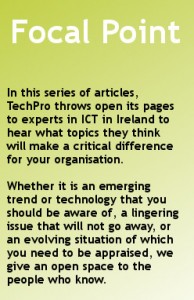Digitisation is a constant topic of conversation with our customers, and it is interesting to look at what this trend means in the context of managed document services (MDS). Many companies are either thinking about digitisation or are at the stage of implementing policies that allow for it, and specifically asking how print and multifunction devices fit in.

The broad move to smart phones, tablets and mobile devices in general, has meant that people are using their PCs and laptops less than in the past. Combine that with widespread awareness of the cost of buying hardware and ongoing costs, and customers, businesses and home users are more careful about the amount of printing they do. They have all become keenly aware of device usage, managing print more pragmatically and reducing unnecessary waste. This explains why managed print services are still a growing area, not just among corporates, but also SMEs.
Historically, OKI took a lead in managed print because it could see how the market was moving. As well as the savings that customers experienced from consolidating printers, scanners and copiers, they benefited from the efficiency of automation that removed the overhead of managing a print estate from organisations and transferred this role to the service provider. Countless hours were won back from customers no longer having to check their toner levels — and then panicking when they found out levels were low ahead of a large print job.
PrintFleet software, for example, will alert our European managed print centre when a device’s toner level drops to a pre-determined level, and a replacement is automatically dispatched to the client before they’re even aware the toner is running low. Organisations may be printing less, but when the need arises, the benefit of a managed print service is that they are never caught out.
Of course, it is one thing to win the contract but it is another to manage it. In Ireland, OKI’s renewal rate stands at more than 90%, and that is due to how we manage customer accounts and also how we adapt. Within the lifetime of a multi-year agreement, we meet with our clients at least every 12 months and we aim to provide the flexibility to adjust for their changing needs – such as moving from managed print to a managed document service.
Since the earliest days of managed print, there have been huge developments in the capabilities of devices, to the point where we almost don’t talk about printers or copiers any more. In particular, the scanning function has come to the fore because many organisations increasingly see it as an on-ramp to document management by giving them the potential to scan documents into an internal workflow. There is now an opportunity to create even further efficiency in how organisations use and process documents.
Security is an increasingly important consideration and we see this permeating the managed document world; it determines who has permission to see certain documents and it can also involve technologies like swipe cards to ensure that print jobs will only output when the authorised person is waiting at the device to collect them.
No matter whether we talk to large corporates or SMEs, hospitals or hotels, as their original managed print contracts come up for renewal, the discussion is noticeably evolving to cover managed document services.
Furthermore, managed document services can now incorporate scanning and uploading documents or printing from mobile devices, within the appropriate security protocols. While it is still early days for this capability, it is definitely one to watch.
Martin Deignan is country manager of OKI Ireland







Subscribers 0
Fans 0
Followers 0
Followers